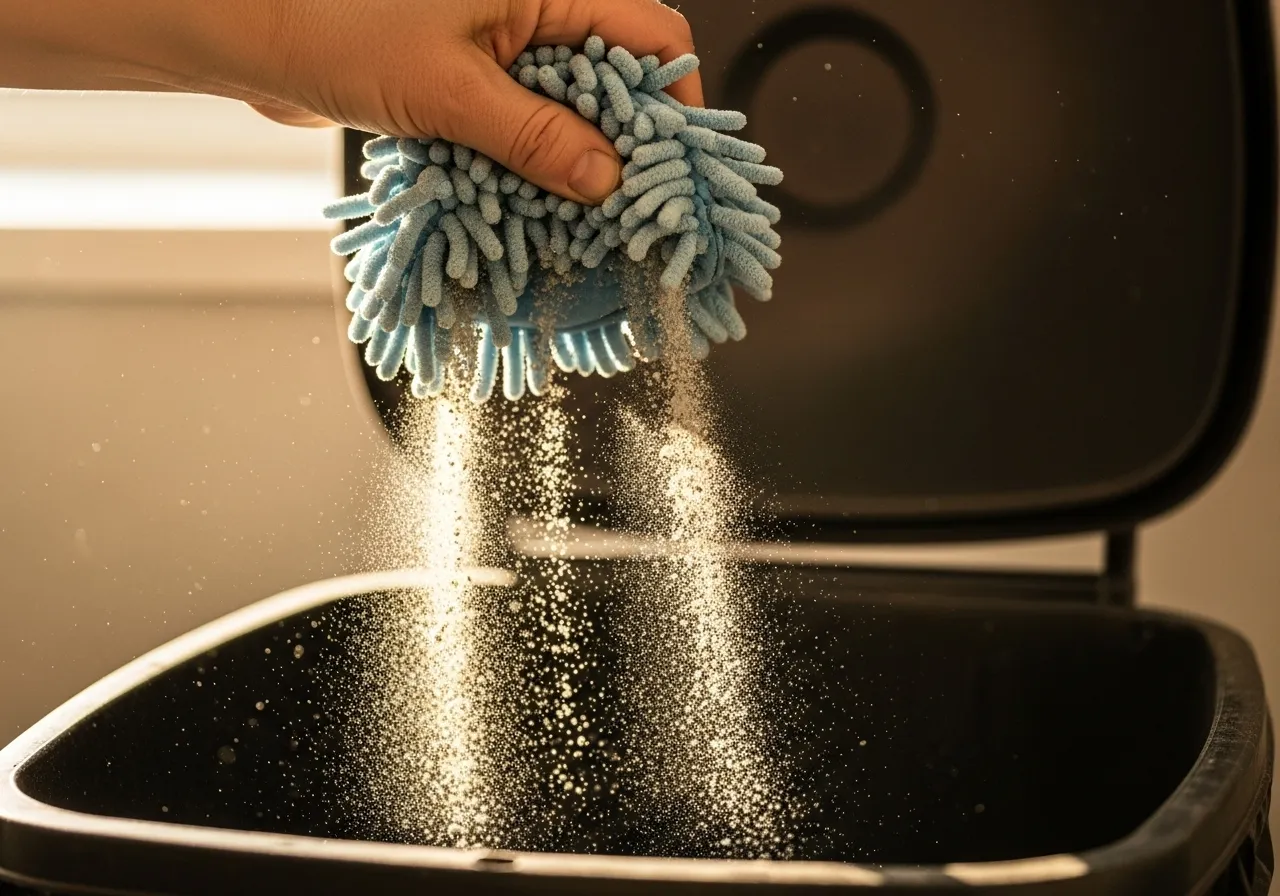
Essential Tools and Supplies for Hardwood Floor Care
When it comes to cleaning hardwood floors, a “less is more” approach is always best. You don’t need a closet full of expensive gadgets or harsh chemicals. A few high-quality, basic tools will do the job perfectly while protecting your floor’s finish.
The Dry Cleaning Arsenal: Your First Line of Defense
Removing dust, dirt, and grit before you introduce any moisture is the single most important rule of floor cleaning. Grinding these small particles into the floor with a wet mop is what causes tiny scratches that dull the finish over time.
Microfiber Dust Mop: A large, flat-head dust mop with a reusable microfiber pad is your best friend. Microfiber is a material made of incredibly fine, split fibers. This structure creates a static charge that actively attracts and traps dust, pet hair, and allergens, rather than just pushing them around like a traditional broom might.
Vacuum Cleaner (with the right settings): A vacuum can be a great tool for cleaning hardwood, but only if used correctly. The ideal vacuum has a dedicated “hard floor” setting. This setting does one crucial thing: it stops the beater bar, or brush roll, from spinning. A fast-spinning, stiff-bristled brush roll is designed to agitate carpet fibers, but on a hardwood floor, it can scratch the finish or scatter debris. If your vacuum doesn’t have a hard floor setting, check if you can manually turn off the brush roll. If not, it’s safer to stick with a dust mop.
Soft-Bristle Broom and Dustpan: For quick cleanups, like sweeping up crumbs in the kitchen after a meal, a simple soft-bristle broom is perfect. It’s gentle on the floor’s surface and efficient for small messes.
The Wet Cleaning Toolkit: Gentle and Effective
Once the floor is free of all dry debris, you can move on to damp mopping. The key word here is damp, not wet.
Microfiber Mop for Damp Mopping: A flat-head mop with a washable microfiber pad is also the best choice for this step. Its design allows you to use very little water, and the microfiber pad gently scrubs the surface without being abrasive. Having a few extra mop pads on hand is helpful, so you can switch to a clean one if the first gets too soiled.
Spray Bottle or Two-Bucket System: A spray bottle is excellent for controlling the amount of water you use. You can lightly mist a small section of the floor at a time, ensuring it never gets too wet. Alternatively, a two-bucket system is a classic method that prevents you from cleaning with dirty water. You use one bucket for your clean cleaning solution and a second bucket to wring the dirty mop into.
A pH-Neutral Floor Cleaner: This is very important. “pH-neutral” means a cleaner has a pH level of around 7, making it neither acidic nor alkaline. Acidic cleaners (like vinegar) and alkaline cleaners (like ammonia or bleach-based products) can be harsh and may strip or dull your floor’s finish over time. You can purchase a cleaner specifically formulated for hardwood floors, or you can make a very simple, mild solution at home.

















